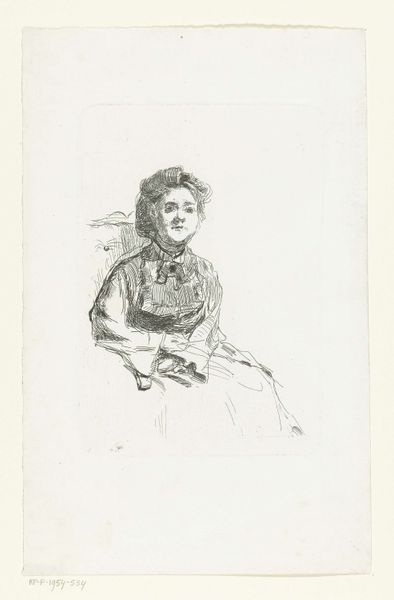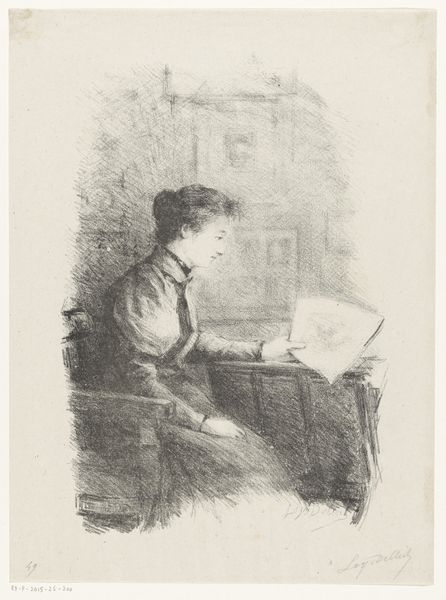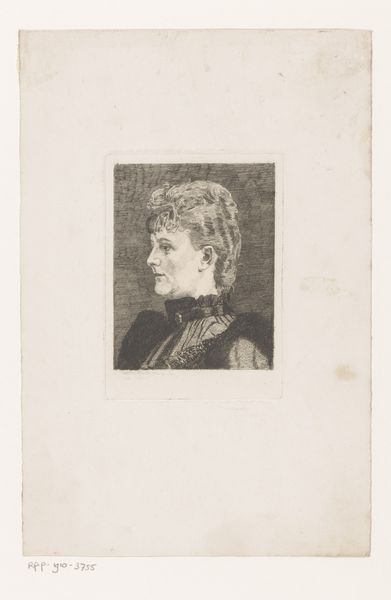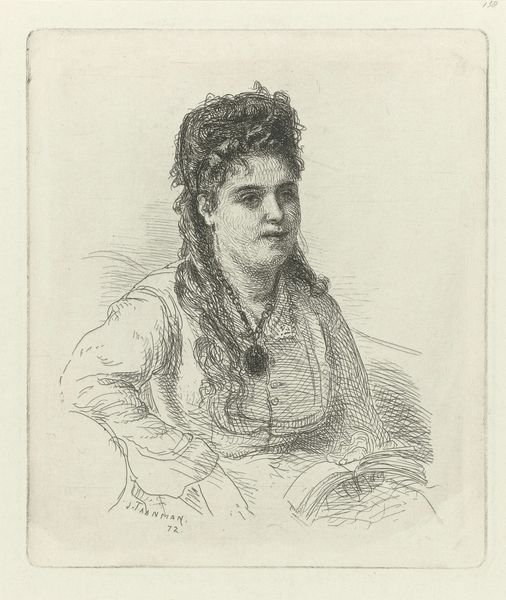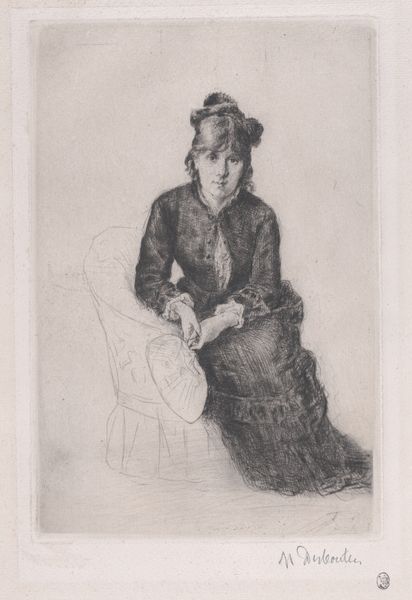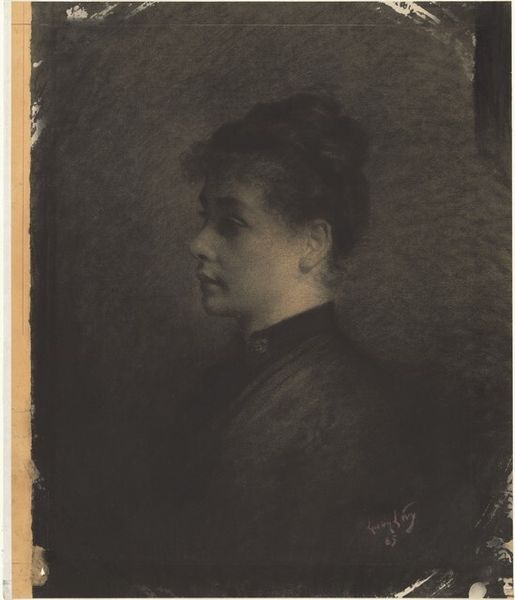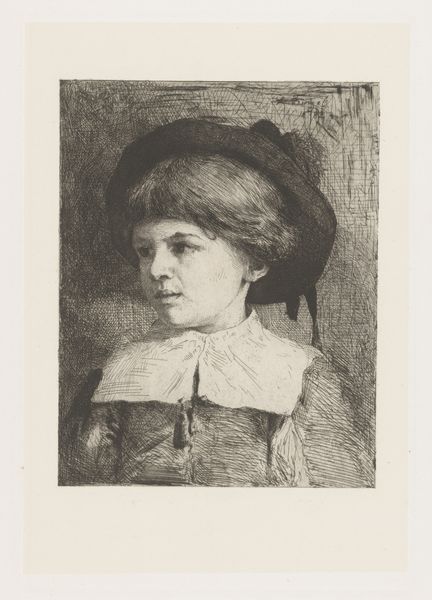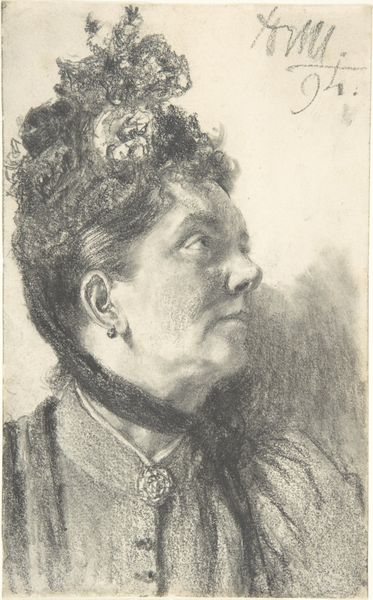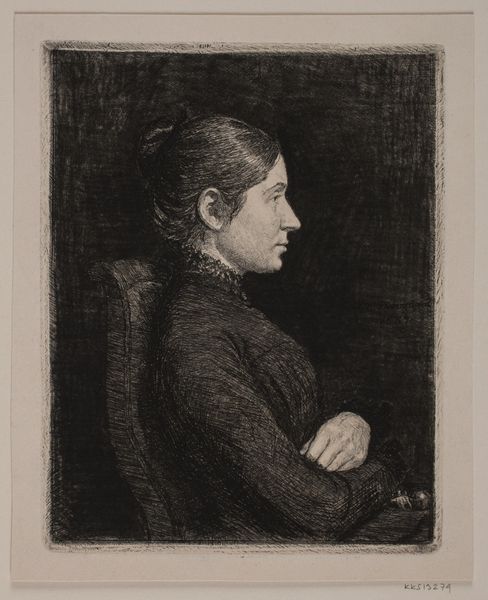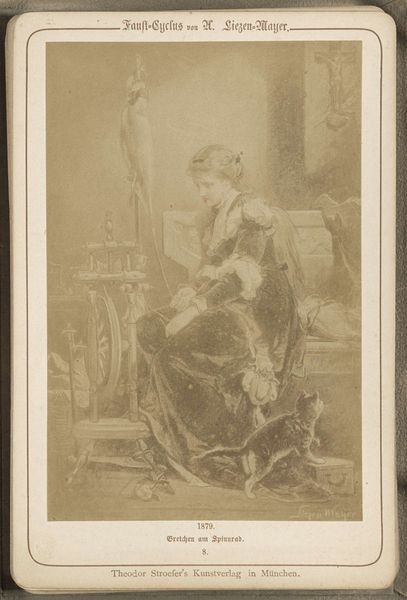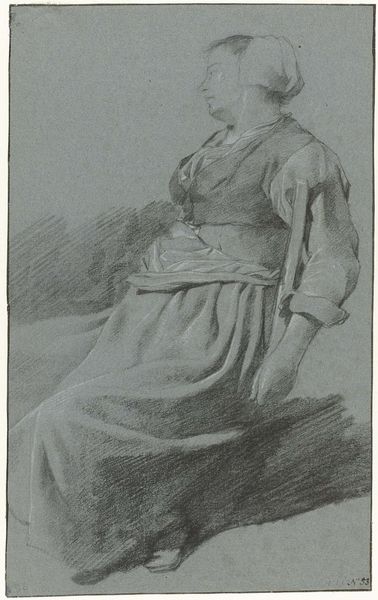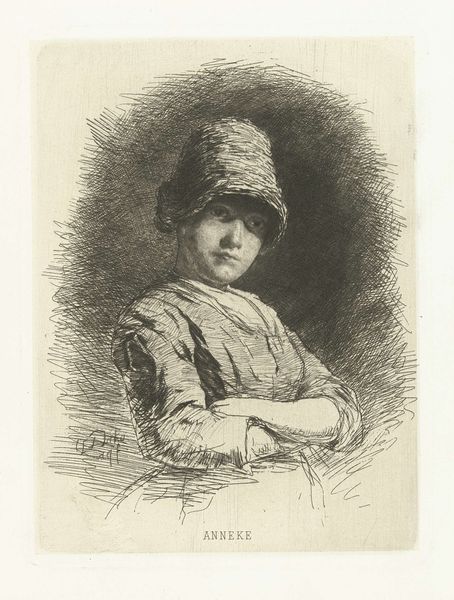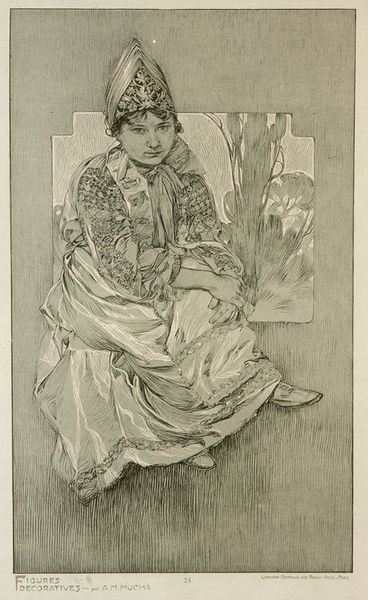
drawing, pencil
#
portrait
#
pencil drawn
#
drawing
#
pencil sketch
#
pencil
#
pencil work
#
academic-art
#
realism
Dimensions: height 576 mm, width 428 mm
Copyright: Rijks Museum: Open Domain
Editor: Here we have Pieter de Josselin de Jong’s "Portret van Emma, koningin-regentes der Nederlanden" from 1893. It’s a pencil drawing. I find it quite striking, a regal portrait done in such a delicate medium. It feels intimate, yet official. What historical context is important to understanding this piece? Curator: It’s crucial to remember that this portrait captures Queen Emma during her regency, a period when she governed the Netherlands on behalf of her underage daughter, Wilhelmina. This image served as a vital representation of leadership at a time of dynastic transition. The choice of pencil, typically associated with sketches and studies, rather than formal painting mediums, speaks volumes about the accessibility and perceived approachability that the monarchy perhaps wished to convey to its subjects during this sensitive period. How do you think the distribution of such a portrait impacted public perception of Queen Emma’s role? Editor: That's a good point. Using a less imposing medium might humanize her, emphasizing her role as a mother figure safeguarding the throne for her daughter, rather than a power-hungry ruler herself. Were there other portraits created of Queen Emma that sought to project the same message? Curator: Indeed. Comparing this drawing with other official portraits from the time, particularly painted ones, can reveal interesting differences in how the monarchy projected itself. We can also analyze distribution channels: Where would the public encounter images like this? Understanding the political function of these portraits gives us valuable insight into the relationship between the Dutch monarchy and its people at the end of the 19th century. Editor: It is interesting to consider how the choice of media and its accessibility would be perceived, crafting a public persona. This helps me to think critically about the politics of portraiture. Thanks! Curator: Yes, understanding these factors allows us to unpack how power is visualized and circulated in society.
Comments
No comments
Be the first to comment and join the conversation on the ultimate creative platform.

